Co-Development of a Tool to Aid the Assessment of Biomass Potential for Sustainable Resource Utilization: An Exploratory Study with Danish and Swedish Municipalities
Abstract
1. Introduction
- Its relative advantage compared to alternative innovations;
- Its degree of compatibility with current ways of approaching solutions;
- Its complexity, which should not be perceived to exceed a certain threshold;
- Its trialability, in terms of the possibilities to experiment with it;
- That it is offering a certain observability, so the results are visible to others.
- How should ABP be adopted?
- Which parameters should be included?
- Which departments should be involved?
- How complex should the ABP be to ensure practitioners will use it?
2. Theoretical Approach
2.1. ABP
2.2. The Participatory Method
3. Methods and Data
3.1. Research Design
3.2. Participants
3.3. Aim of the Workshops
4. Results
4.1. ABP Adoption
4.2. Department Involvement
4.3. Complexity and Width of Usability
4.4. Parameters to Include
4.5. Summary
4.6. Blueprint for the ABP
5. Discussion
5.1. Maintenance of the ABP
5.2. Practitioners’ Involvement in Adoption
5.3. Holistic View
5.4. Methodological Reflections
6. Conclusions
Supplementary Materials
Funding
Institutional Review Board Statement
Informed Consent Statement
Data Availability Statement
Conflicts of Interest
References
- Pörtner, H.-O.; Roberts, D.C.; Adam, H.; Adelekan, I.; Adler, C.; Adrian, R.; Aldunce, P.; Ali, E.; Ara Begum, R.; Bednar-Friedl, B.; et al. Climate Change 2022: Impacts, Adaptation and Vulnerability—Technical Summary; Cambridge University Press: Cambridge, UK, 2020. [Google Scholar] [CrossRef]
- Yang, S.-T.; Yu, M. Integrated Biorefinery for Sustainable Production of Fuels, Chemicals, and Polymers. 2013. Available online: http://ebookcentral.proquest.com/lib/kbdk/detail.action?docID=1204851 (accessed on 5 June 2023).
- García-Condado, S.; López-Lozano, R.; Panarello, L.; Cerrani, I.; Nisini, L.; Zucchini, A.; Van der Velde, M.; Baruth, B. Assessing Lignocellulosic Biomass Production from Crop Residues in the European Union: Modelling, Analysis of the Current Scenario and Drivers of Interannual Variability. GCB Bioenergy 2019, 11, 809–831. [Google Scholar] [CrossRef]
- Aragonés, M.M.; Nieto, G.d.l.V.; Fajardo, M.N.; Rodríguez, D.P.; Gaffey, J.; Attard, J.; McMahon, H.; Doody, P.; Ugarte, J.A.; Pérez-Camacho, M.N.; et al. Digital Innovation Hubs as a Tool for Boosting Biomass Valorisation in Regional Bioeconomies: Andalusian and South-East Irish Case Studies. J. Open Innov. Technol. Mark. Complex. 2020, 6, 115. [Google Scholar] [CrossRef]
- Daioglou, V.; Doelman, J.C.; Wicke, B.; Faaij, A.; van Vuuren, D.P. Integrated Assessment of Biomass Supply and Demand in Climate Change Mitigation Scenarios. Glob. Environ. Chang. 2019, 54, 88–101. [Google Scholar] [CrossRef]
- European Commission. Sustainable and Optimal Use of Biomass for Energy in the EU beyond 2020. 2017. Available online: https://energy.ec.europa.eu/publications/sustainable-and-optimal-use-biomass-energy-eu-beyond-2020_en (accessed on 17 April 2023).
- Regeringen. Danmark Kan Mere II. 2022. Available online: https://www.regeringen.dk/media/11205/danmark-kan-mere-iidocx.pdf (accessed on 17 April 2023).
- Energimyndigheten. Lägesbild Över Energiförsörjningen Med Anledning Av Kriget i Ukraina. 2022. Available online: https://www.energimyndigheten.se/49633a/globalassets/om-oss/ukraina/lagesbilder/2023/28-mars-2023-uppdaterad-lagesbild-med-anledning-av-situationen-i-ukraina.pdf (accessed on 17 April 2023).
- Karhinen, S.; Peltomaa, J.; Riekkinen, V.; Saikku, L. Impact of a Climate Network: The Role of Intermediaries in Local Level Climate Action. Glob. Environ. Chang. 2021, 67, 102225. [Google Scholar] [CrossRef]
- Pieratti, E.; Paletto, A.; Atena, A.; Bernardi, S.; Palm, M.; Patzelt, D.; Manuela, R.; Teston, F.; Voglar, G.; Grebenc, T.; et al. Environmental and Climate Change Impacts of Eighteen Biomass-Based Plants in the Alpine Region: A Comparative Analysis. J. Clean. Prod. 2020, 242, 118449. [Google Scholar] [CrossRef]
- Dobravec, V.; Matak, N.; Sakulin, C.; Krajačić, G. Multilevel Governance Energy Planning and Policy: A View on Local Energy Initiatives. Energy Sustain. Soc. 2021, 11, 2. [Google Scholar] [CrossRef]
- Kautto, N.; Peck, P. Lessons from Biomass Planning at National and Regional Level in the EU. Biofuels Bioprod. Biorefin. 2012, 6, 269–280. [Google Scholar] [CrossRef]
- Capellán-Pérez, I.; Campos-Celador, Á.; Terés-Zubiaga, J. Renewable Energy Cooperatives as an Instrument towards the Energy Transition in Spain. Energy Policy 2018, 123, 215–229. [Google Scholar] [CrossRef]
- IEA. Bioenergy Project Development & Biomass Supply. 2007. Available online: https://www.ieabioenergy.com/wp-content/uploads/2013/10/Good-Practice-Guideines-Bioenergy-Project-Development-and-Biomass-Supply.pdf (accessed on 17 April 2023).
- Deng-Beck, C.; Vigran, D.; Van Staden, M.; Ferreira, A.R.; Franceschi, M. Multilevel Climate Action: The Path to 1.5 Degrees; Bonn Center for Local Climate Action and Reporting: Bonn, Germany, 2018. [Google Scholar]
- Nielsen, M.B. Identifying Challenges and Drivers for Deployment of Centralized Biogas Plants in Denmark. Sustainability 2022, 14, 8021. [Google Scholar] [CrossRef]
- Gaarsmand, R. Design Af Kommunalt Faciliteret Igangsaetning Og Projektudvikling: Realisering Af VE-Anlaeg; Roskilde University: Trekroner, Denmark, 2021. [Google Scholar]
- Baasch, S. Energy Transition with Biomass Residues and Waste: Regional-Scale Potential and Conflicts. A Case Study from North Hesse, Germany. J. Environ. Policy Plan. 2021, 23, 243–255. [Google Scholar] [CrossRef]
- Brosowski, A.; Krause, T.; Mantau, U.; Mahro, B.; Noke, A.; Richter, F.; Raussen, T.; Bischof, R.; Hering, T.; Blanke, C.; et al. How to Measure the Impact of Biogenic Residues, Wastes and by-Products: Development of a National Resource Monitoring Based on the Example of Germany. Biomass Bioenergy 2019, 127, 105275. [Google Scholar] [CrossRef]
- Soltani, A.; Hewage, K.; Reza, B.; Sadiq, R. Multiple Stakeholders in Multi-Criteria Decision-Making in the Context of Municipal Solid Waste Management: A Review. Waste Manag. 2015, 35, 318–328. [Google Scholar] [CrossRef] [PubMed]
- Lakota, M.; Stajnko, D. Using of GIS Tools for Analysis of Organic Waste Management in Slovenia Region Pomurje. Procedia Technol. 2013, 8, 570–574. [Google Scholar] [CrossRef]
- Zezelj, B.; Maksimovic, R.; Todorovic, T.; Djatkov, D. Analysis of the Possibilities for Using Renewable Energy Sources in the Autonomous Province of Vojvodina. Sustainability 2020, 12, 5645. [Google Scholar] [CrossRef]
- Brosowski, A.; Thrän, D.; Mantau, U.; Mahro, B.; Erdmann, G.; Adler, P.; Stinner, W.; Reinhold, G.; Hering, T.; Blanke, C. A Review of Biomass Potential and Current Utilisation—Status Quo for 93 Biogenic Wastes and Residues in Germany. Biomass Bioenergy 2016, 95, 257–272. [Google Scholar] [CrossRef]
- Kautto, N.; Peck, P. Regional Biomass Planning—Helping to Realise National Renewable Energy Goals? Renew. Energy 2012, 46, 23–30. [Google Scholar] [CrossRef]
- Amer, S.B.; Gregg, J.S.; Sperling, K.; Drysdale, D. Too Complicated and Impractical? An Exploratory Study on the Role of Energy System Models in Municipal Decision-Making Processes in Denmark. Energy Res. Soc. Sci. 2020, 70, 101673. [Google Scholar] [CrossRef]
- Herreras Martínez, S.; Harmsen, R.; Menkveld, M.; Faaij, A.; Kramer, G.J. Municipalities as Key Actors in the Heat Transition to Decarbonise Buildings: Experiences from Local Planning and Implementation in a Learning Context. Energy Policy 2022, 169, 113169. [Google Scholar] [CrossRef]
- Johannsen, R.M.; Østergaard, P.A.; Maya-Drysdale, D.; Mouritsen, L.K.E. Designing Tools for Energy System Scenario Making in Municipal Energy Planning. Energies 2021, 14, 1442. [Google Scholar] [CrossRef]
- Busse, M.; Siebert, R. Acceptance Studies in the Field of Land Use—A Critical and Systematic Review to Advance the Conceptualization of Acceptance and Acceptability. Land Use Policy 2018, 76, 235–245. [Google Scholar] [CrossRef]
- Rogers, E.M. Diffusion of Preventive Innovations. Addict. Behav. 2002, 27, 989–993. [Google Scholar] [CrossRef]
- Daves, F.D. Perceived Usefulness, Perceived Ease of Use, and User Acceptance of Information Technology. MIS Q. 1989, 13, 319–340. [Google Scholar] [CrossRef]
- OECD. Measuring Material Flows and Resource Productivity Volume III Inventory of Country Activities. 2008. III, 1–164. Available online: https://www.oecd.org/environment/indicators-modelling-outlooks/MFA-Inventory.pdf (accessed on 17 April 2023).
- Voivontas, D.; Assimacopoulos, D.; Koukios, E.G. Assessment of Biomass Potential for Power Production: A GIS Based Method. Biomass Bioenergy 2001, 20, 101–112. [Google Scholar] [CrossRef]
- Slocum, N. Participatory Methods Toolkit A Practitioner’s Manual; King Baudouin Foundation: Brussels, Belgium; Flemish Institute for Science and Technology Assessment: Flanders, Belgium, 2003; ISBN 9051304471. Available online: https://cris.unu.edu/participatory-methods-toolkit-practitioners-manual (accessed on 17 April 2023).
- Chambers, R. The Origins and Practice of Participatory Rural Appraisal. World Dev. 1994, 22, 953–969. [Google Scholar] [CrossRef]
- Van Asselt, M.B.A.; Mellors, J.; Rijkens-Klomp, N.; Greeuw, S.C.H.; Molendijk, K.G.P.; Beers, P.J. Building Blocks for Participation in Integrated Assessment A Review of Participatory Methods; International Centre for Integrative Studies (ICIS): Maastricht, The Netherlands, 2001. [Google Scholar]
- BOFA. Bornholm Viser Vej—Uden Affald 2032. 2019. Available online: https://bofa.dk/wp-content/uploads/2019/01/Bornholm-viser-vej.pdf (accessed on 17 April 2023).
- Odsherred Municipality. Ny Samlet Klimaplan—DK2020. Available online: https://www.odsherred.dk/da/bo-og-leve/affald-og-en-groen-hverdag/energi-og-klima/ny-samlet-klimaplan-dk2020/ (accessed on 5 June 2023).
- Odsherred Municipality. LOKALPLAN NR. 2017-03 Biogasanlaeg Nord for Vig Plan, Byg Og Erhverv. 2017. Available online: https://odsherred.dk/sites/default/files/PDF/lp_2017-03_biogasanlaeg_nord_for_vig_endelig_0.pdf (accessed on 17 April 2023).
- Odsherred Municipality. Miljøgodkendelse Alle 198: Ændring Af Anlæg Til Pyrolyseanlæg. 2021. Available online: https://dma.mst.dk/vis-virksomhed/d1428336-e6ab-4515-af98-015024f0669c (accessed on 5 June 2023).
- Trelleborg Municipality. Energiplan 2019–2023. 2019. Available online: https://cms.trelleborg.se/wp-content/uploads/2022/05/energiplan_2019.pdf (accessed on 17 April 2023).
- Lejre Municipality. Lejre Kommunes Klimaplan 2020–2050 Vores Sted-Vores Klima. 2020. Available online: https://www.lejre.dk/media/qkgfmzxu/lejre-klimaplan_finalxx-1.pdf (accessed on 17 April 2023).
- MIRO. The Visual Collaboration Platform for Every Team|Miro. Available online: https://miro.com/?utm_source%3Dgoogle%26utm_medium%3Dcpc%26utm_campaign%3DS|GOO|BRN|WW|DA-DA|Brand|Exact%26utm_adgroup=%26utm_custom%3D10501506388%26utm_content%3D447030102414%26utm_term%3Dmiro%26matchtype=e%26device=c%26location=1005014&gclid=CjwKCAiA4KaRBhBdEiwAZi1zzhYCTXwZLr4M9zmQm1VZ3uVncdockaI_PIy-r_PXO_vktEQ0lT_XAxoCMgsQAvD_BwE (accessed on 10 March 2022).
- De Graaf, G.; Huberts, L.W. Portraying the Nature of Corruption Using an Explorative Case Study Design. Public Adm. Rev. 2008, 68, 640–653. [Google Scholar] [CrossRef]
- Mason, M. Sample Size and Saturation in PhD Studies Using Qualitative Interviews. Forum Qual. Soc. Res. Soz. 2010, 11, 8. [Google Scholar] [CrossRef]
- Nelson, J. Using Conceptual Depth Criteria: Addressing the Challenge of Reaching Saturation in Qualitative Research. Qual. Res. 2017, 17, 554–570. [Google Scholar] [CrossRef]
- Saunders, B.; Sim, J.; Kingstone, T.; Baker, S.; Waterfield, J.; Bartlam, B.; Burroughs, H.; Jinks, C. Saturation in Qualitative Research: Exploring Its Conceptualization and Operationalization. Qual. Quant. 2018, 52, 1893–1907. [Google Scholar] [CrossRef]
- Danish Energy Agency. Technology Data. Available online: https://ens.dk/en/our-services/projections-and-models/technology-data (accessed on 22 September 2022).
- Cornet, Y.; Gudmundsson, H. Building a Metaframework for Sustainable Transport Indicators Review of Selected Contributions. Transp. Res. Rec. 2015, 2531, 103–112. [Google Scholar] [CrossRef]
- Patino, J.E.; Duque, J.C. A Review of Regional Science Applications of Satellite Remote Sensing in Urban Settings. Comput. Environ. Urban Syst. 2013, 37, 1–17. [Google Scholar] [CrossRef]
- Yang, P.; Ng, T.L.; Cai, X. Reward-Based Participant Management for Crowdsourcing Rainfall Monitoring: An Agent-Based Model Simulation. Water Resour. Res. 2019, 55, 8122–8141. [Google Scholar] [CrossRef]
- Drysdale, D.; Mathiesen, B.V.; Lund, H. From Carbon Calculators to Energy System Analysis in Cities. Energies 2019, 12, 2307. [Google Scholar] [CrossRef]
- Vaidya, A.; Mayer, A.L. Use of a Participatory Approach to Develop a Regional Assessment Tool for Bioenergy Production. Biomass Bioenergy 2016, 94, 1–11. [Google Scholar] [CrossRef]
- Groff, J.S. Dynamic Systems Modeling in Educational System Design & Policy. J. New Approaches Educ. Res. 2013, 2, 72–81. [Google Scholar] [CrossRef]
- Disterheft, A.; Caeiro, S.; Azeiteiro, U.M.; Filho, W.L. Sustainable Universities—A Study of Critical Success Factors for Participatory Approaches. J. Clean. Prod. 2015, 106, 11–21. [Google Scholar] [CrossRef]
- Koole, B. Trusting to Learn and Learning to Trust. A Framework for Analyzing the Interactions of Trust and Learning in Arrangements Dedicated to Instigating Social Change. Technol. Forecast. Soc. Chang. 2020, 161, 120260. [Google Scholar] [CrossRef]
- Reed, M.S. Stakeholder Participation for Environmental Management: A Literature Review. Biol. Conserv. 2008, 141, 2417–2431. [Google Scholar] [CrossRef]
- Aare, A.K.; Lund, S.; Hauggaard-Nielsen, H. Exploring Transitions towards Sustainable Farming Practices through Participatory Research—The Case of Danish Farmers’ Use of Species Mixtures. Agric. Syst. 2021, 189, 103053. [Google Scholar] [CrossRef]
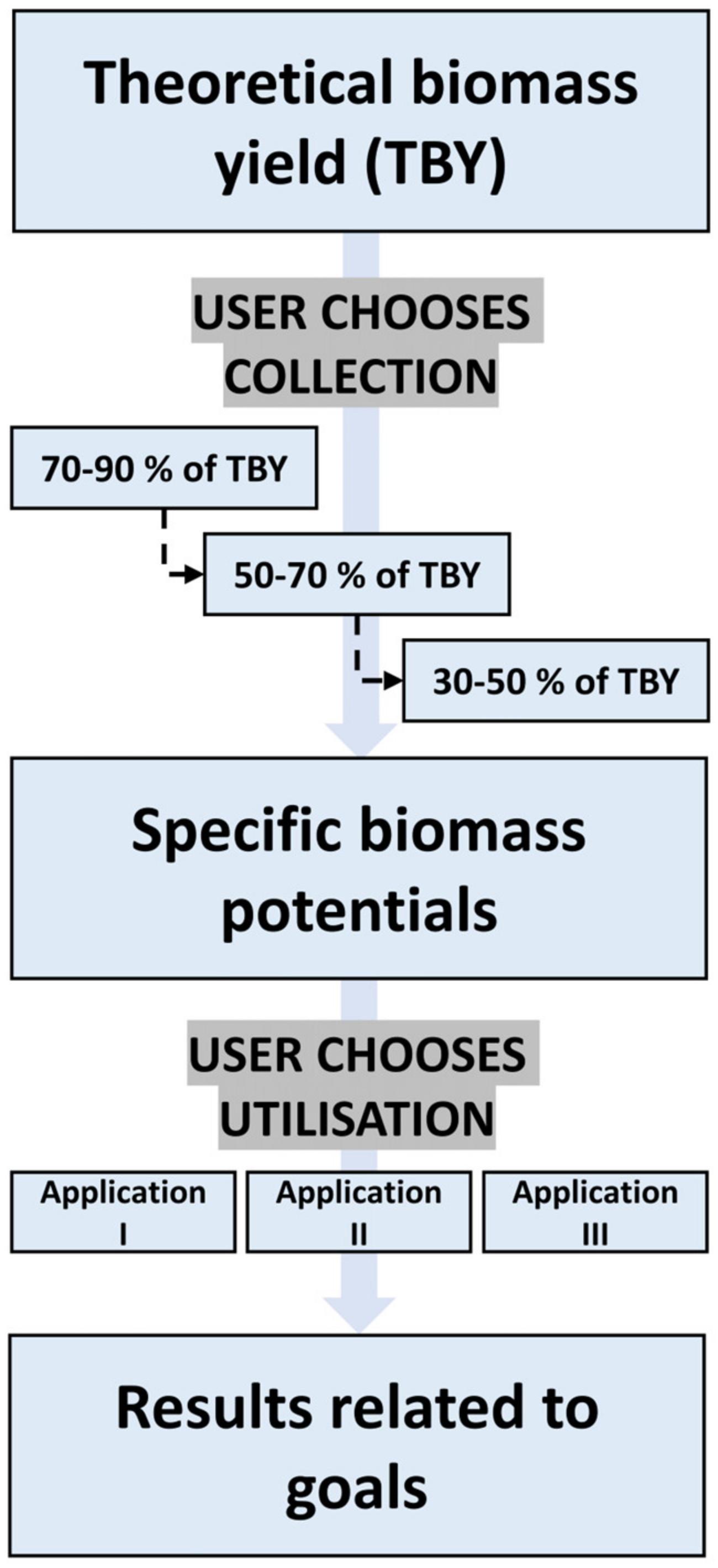
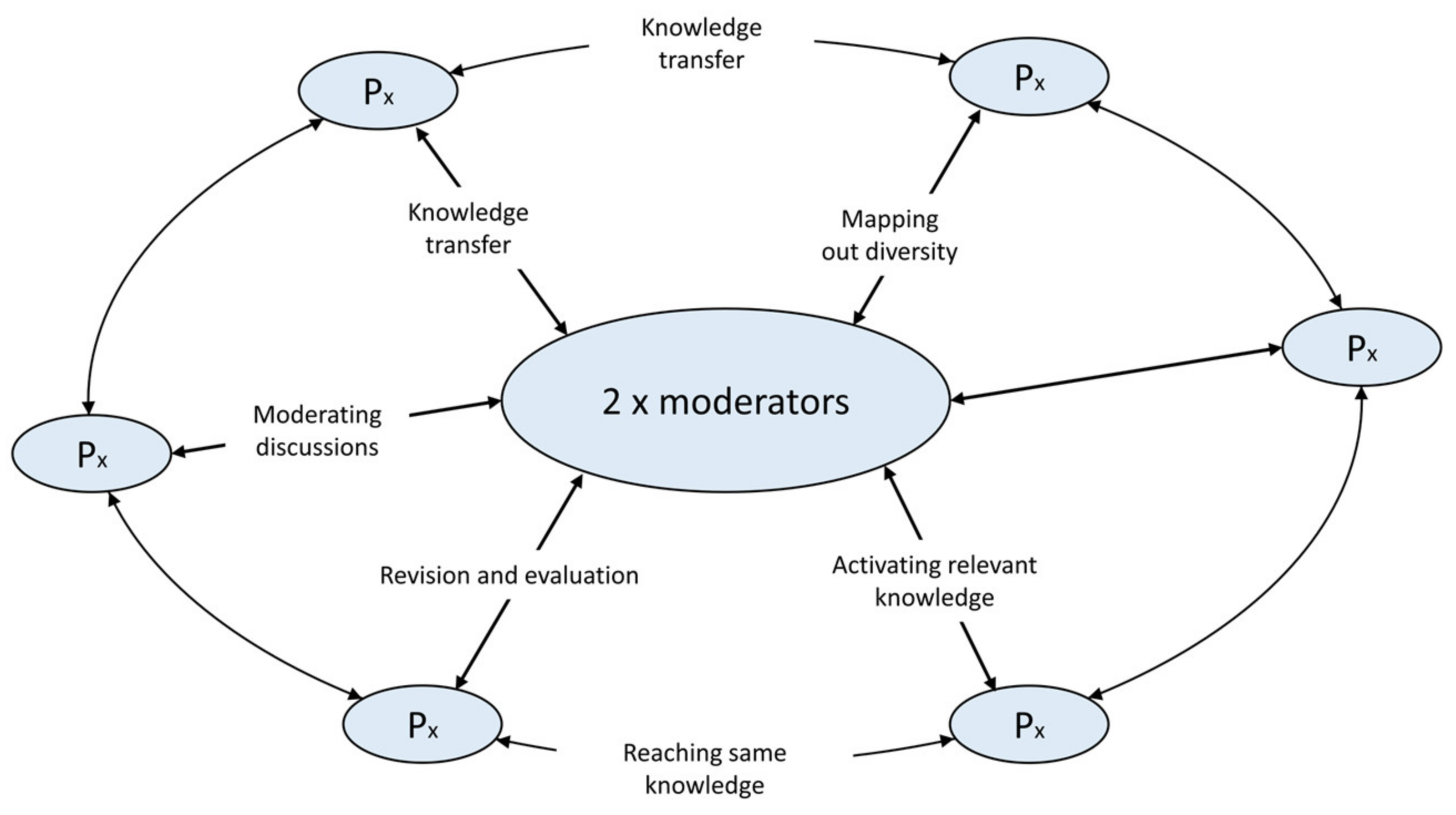
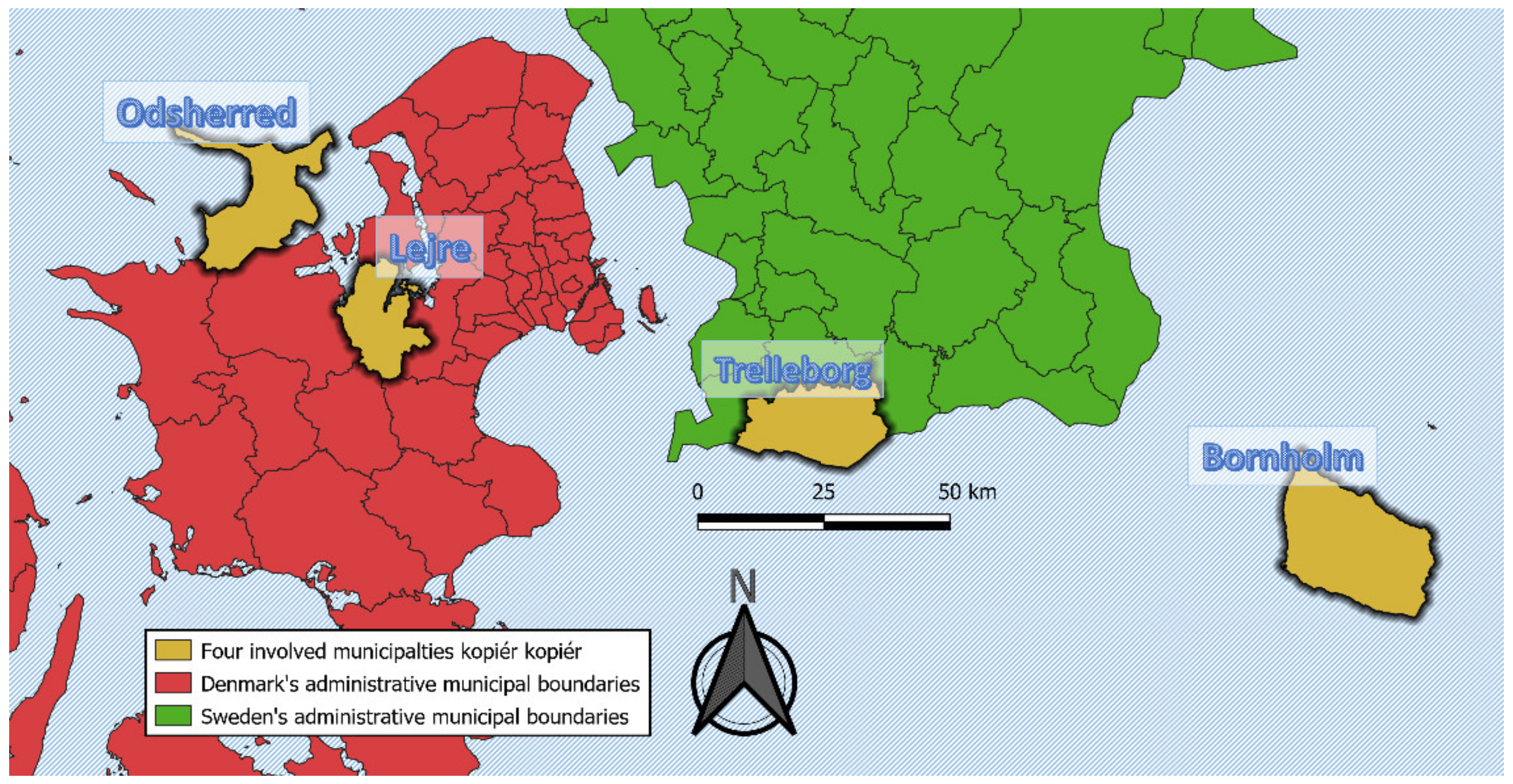
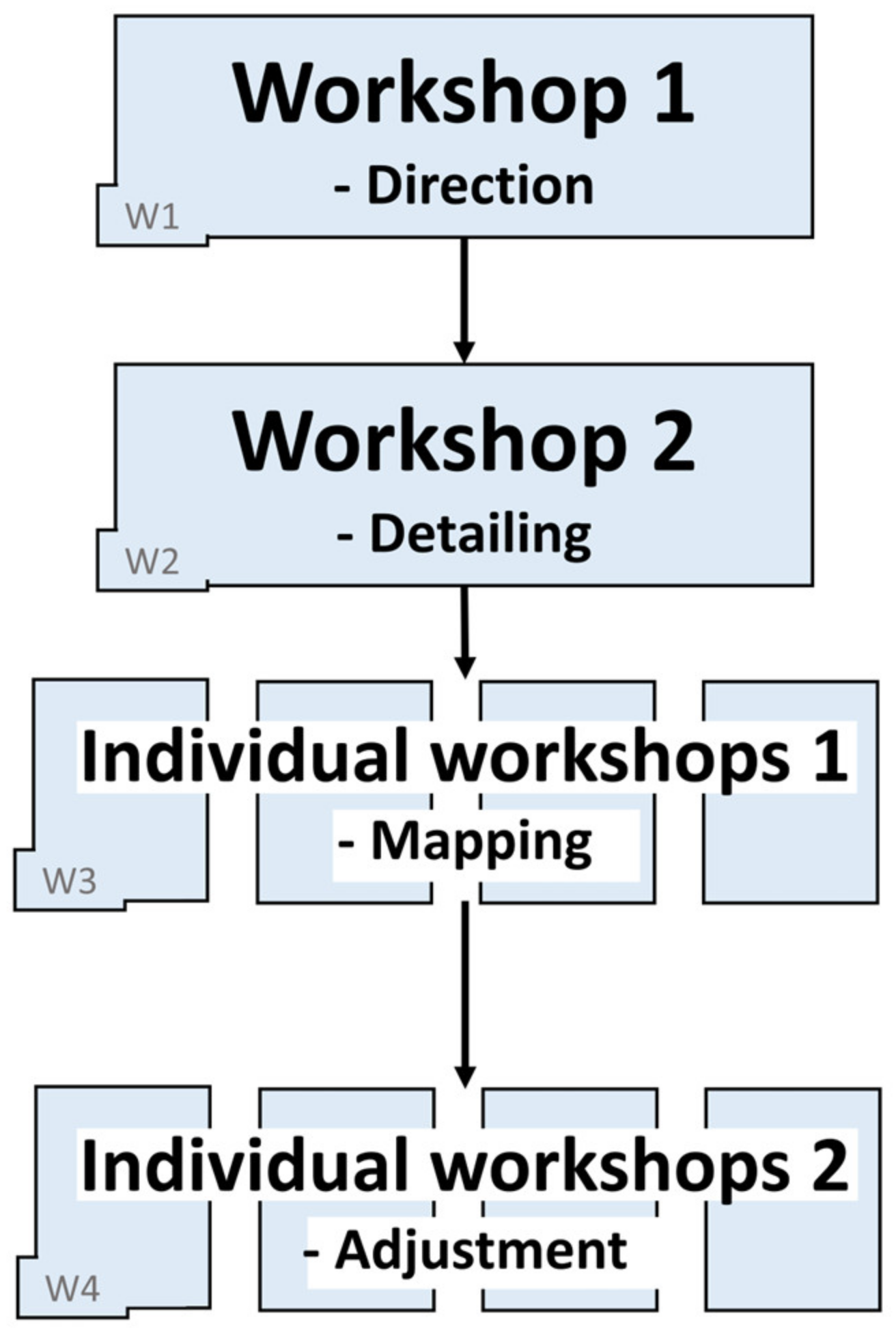
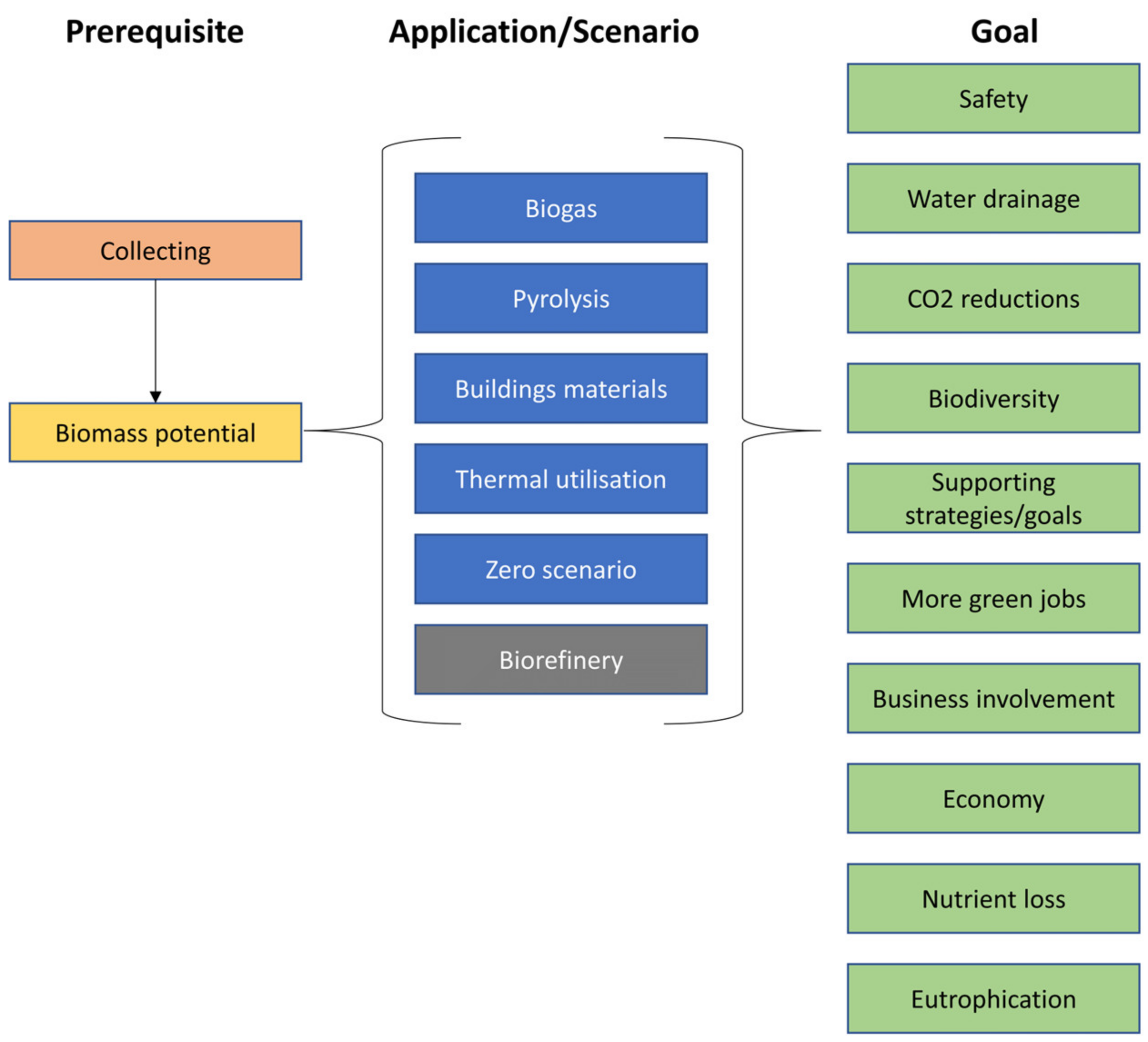

| Municipality | Region | Country | Comments | Municipality Code |
|---|---|---|---|---|
| Odsherred | Zealand | Denmark | Former employee also attended | Od |
| Bornholm | Zealand | Denmark | Businesses invited as well | Bo |
| Lejre | Zealand | Denmark | Le | |
| Trelleborg | Skåne | Sweden | Tr |
| All Municipalities | ||
| Workshop | Focus | Research method |
| W1 | Direction | Group work, discussion about the questionnaire |
| W2 | Detailing | Breakout room discussions, ABP introduction |
| Individual Municipalities | ||
| Workshop | Focus | Research method |
| W3 | Mapping | Discussion in MIRO exercises, digital post-its |
| W4 | Adjustment | Testing the ABP, discussion of results, evaluation |
| Affiliated Municipality | Current Position * | Experience Related to Position (Years) | Participant Code |
|---|---|---|---|
| Bornholm | Environmental technologist | 2 | B1 |
| Bornholm | International market and business economics | 5 | B2 |
| Bornholm | Plant advisor | 38 | B3 |
| Bornholm | Engineer | 3 | B4 |
| Bornholm | Managing director | 2 | B5 |
| Bornholm | Development consultant | 1 | B6 |
| Lejre | Green areas and bicycle coordinator | 1 | L1 |
| Lejre | Green areas and bicycle coordinator | 5 | L2 |
| Lejre | Waste and recycle employee | 10 | L3 |
| Lejre | Operational planner | 11 | L4 |
| Lejre | Head of road, park, and technical service | 15 | L5 |
| Lejre | Department manager traffic, waste and recycle | 16 | L6 |
| Odsherred | Climate and process coordinator | 1 | O1 |
| Odsherred | Climate and process coordinator | 8 | O2 |
| Odsherred | Business consultant | 5 | O3 |
| Odsherred | Planning employee | 9 | O4 |
| Odsherred | Project manager and climate coordinator | 10 | Q5 |
| Trelleborg | Sustainability strategist | 3 | T1 |
| Trelleborg | Sustainability strategist | 4 | T2 |
| Trelleborg | Operation and maintenance manager, Technical service administration | 14 | T3 |
| Trelleborg | Sustainability strategist | 11 | T4 |
| Trelleborg | Project manager | 17 | T5 |
| Trelleborg | Project manager | 5 | T6 |
| ABP Adoption | Department Involvement | Complexity and Width of Usability | Parameters |
|---|---|---|---|
| Use same wording/terminology as municipal tasks. | Use same wording/terminology as department. | Not usable for operational staff. | Holistic solutions are needed for the ABP to be approved in the political system. |
| Same general way of thinking. | Data collection is sought both internally and externally. | ABP should be aimed environmental planners within the municipality. | The bulk quantity of biomass needs to be combined with its utilization and economic aspects. |
| Integration in climate plans. | Challenge to obtain data from subcontractors. | Creating levels of complexity would benefit the usability. | Biodiversity is an important parameter in land management. |
| Project initiation phase as a mapping tool. | Public tendering needs to focus on data collection as well. | Simple outputs are needed that would be understandable for the political system. | Comparable data and data processes are needed between municipalities. |
| Use in statutory environmental oversight of companies. | Decision makers and practical day-to-day management sit in different departments. | ||
| Long-term implementation is needed. |
| Application |
|---|
| Waste incineration (CHP) |
| Anaerobic digestion (Gas grid/CHP) |
| Fodder |
| Biomass (HOP/CHP) |
| Fertilizer/Soil improvement |
| Not collected |
| Application unknown |
| Composting |
| Pyrolysis (HOP) |
| Bedding |
| Sold |
Disclaimer/Publisher’s Note: The statements, opinions and data contained in all publications are solely those of the individual author(s) and contributor(s) and not of MDPI and/or the editor(s). MDPI and/or the editor(s) disclaim responsibility for any injury to people or property resulting from any ideas, methods, instructions or products referred to in the content. |
© 2023 by the author. Licensee MDPI, Basel, Switzerland. This article is an open access article distributed under the terms and conditions of the Creative Commons Attribution (CC BY) license (https://creativecommons.org/licenses/by/4.0/).
Share and Cite
Martin, A.D. Co-Development of a Tool to Aid the Assessment of Biomass Potential for Sustainable Resource Utilization: An Exploratory Study with Danish and Swedish Municipalities. Sustainability 2023, 15, 9772. https://doi.org/10.3390/su15129772
Martin AD. Co-Development of a Tool to Aid the Assessment of Biomass Potential for Sustainable Resource Utilization: An Exploratory Study with Danish and Swedish Municipalities. Sustainability. 2023; 15(12):9772. https://doi.org/10.3390/su15129772
Chicago/Turabian StyleMartin, Andreas Dyreborg. 2023. "Co-Development of a Tool to Aid the Assessment of Biomass Potential for Sustainable Resource Utilization: An Exploratory Study with Danish and Swedish Municipalities" Sustainability 15, no. 12: 9772. https://doi.org/10.3390/su15129772
APA StyleMartin, A. D. (2023). Co-Development of a Tool to Aid the Assessment of Biomass Potential for Sustainable Resource Utilization: An Exploratory Study with Danish and Swedish Municipalities. Sustainability, 15(12), 9772. https://doi.org/10.3390/su15129772








